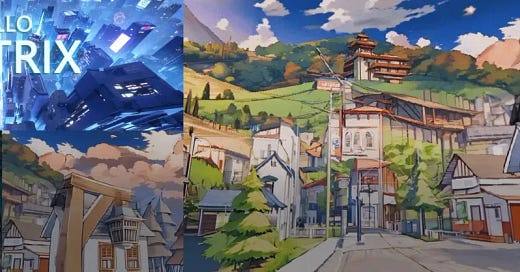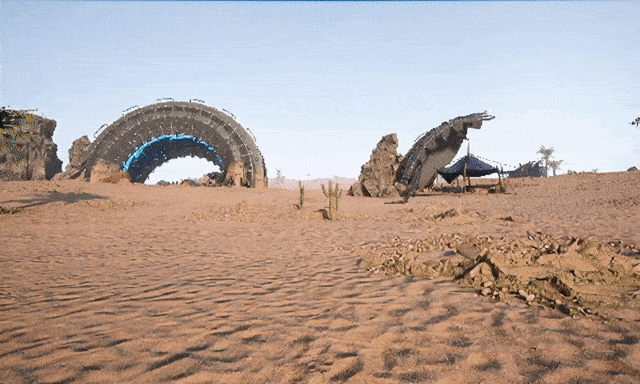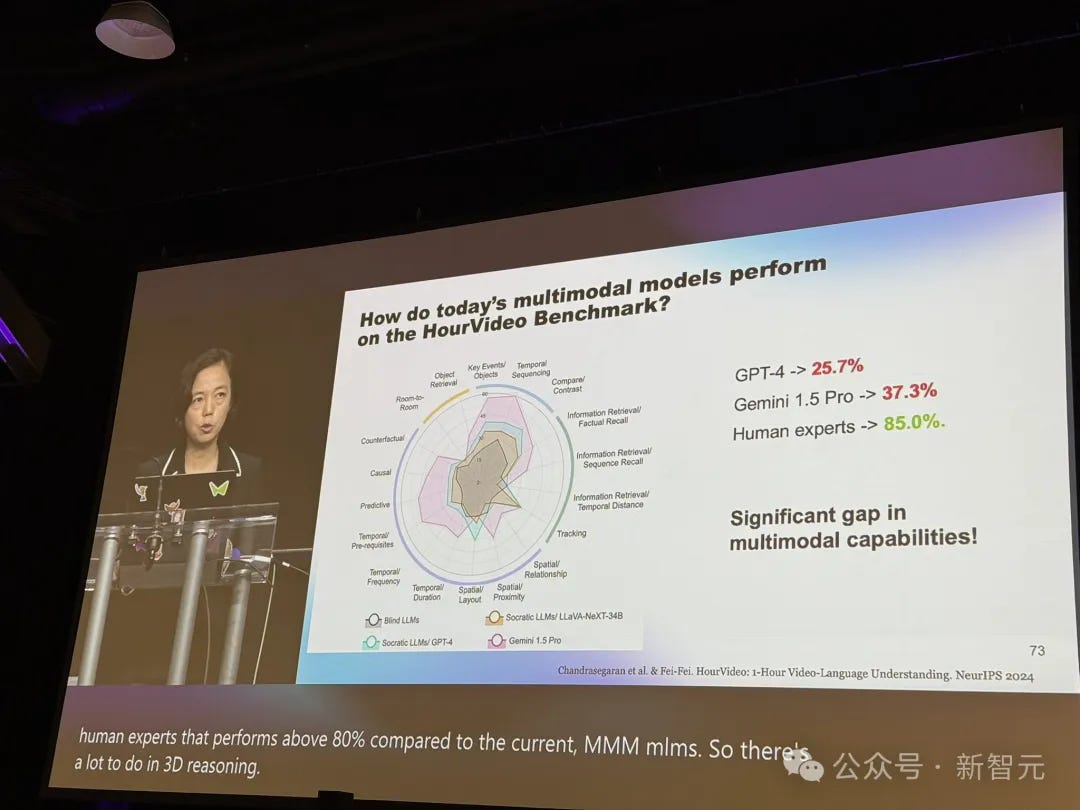Matrix-Zero: Kunlun's Breakthrough in Spatial Intelligence Brings 3D Generation to New Heights
Chinese Tech Giant Enters Trillion-Dollar AI Market with China's First Self-Developed Spatial Intelligence System
In a significant development for the AI industry, Kunlun Tech has unveiled Matrix-Zero, a groundbreaking world model that marks China's entry into the competitive spatial intelligence market. This announcement comes at a crucial time when industry leaders like Fei-Fei Li and major tech companies are increasingly focusing on spatial intelligence as the next frontier in AI development.
The Rise of Spatial Intelligence
The AI industry has witnessed tremendous evolution in recent years, progressing from text to 2D images and videos. However, as Stanford's "AI godmother" Fei-Fei Li points out, truly understanding the world requires more than just seeing it - AI must comprehend and interact with the three-dimensional world around us.
This perspective has gained significant traction, particularly after World Labs, led by Fei-Fei Li, achieved a $1 billion valuation within just three months of its launch. The company's breakthrough in December 2024, generating 3D images from single photos, was quickly followed by Google DeepMind's Genie 2, which can create one-minute game worlds from single images.
Matrix-Zero: A Dual-Model Approach
Kunlun's Matrix-Zero consists of two revolutionary components:
A 3D scene generation model
An interactive video generation model
The system's primary capabilities include transforming 2D images into explorable 3D environments and generating interactive video content based on user input. This dual approach addresses several critical limitations in existing spatial AI technologies.
Revolutionary 3D Scene Generation
Matrix-Zero's 3D generation capabilities represent a significant advance over existing solutions. The system can:
Transform any 2D image into a fully explorable 3D environment
Maintain consistency across all viewing angles
Support long-distance exploration in any direction
Handle both realistic and cartoon-style inputs
Generate physically accurate dynamic elements like lighting, ocean waves, and clouds
The technology employs a sophisticated two-module approach:
A scene layout generation module utilizing differentiable rendering and diffusion models
A texture generation module trained on image and video generation models
This architecture enables continuous geometric and texture completion as users move through the space, ensuring consistent and logical environments from any angle or position.
Interactive Video Generation
The system's video generation capabilities set new standards for user interaction and control. Unlike traditional AI video models, Matrix-Zero enables real-time interaction, allowing users to:
Navigate freely through generated environments
Adjust viewing angles in real-time
Maintain logical consistency throughout interactions
Generate content that responds immediately to user input
The technology builds on a proprietary generative video model and user input interaction model, enabling precise control over camera movements and scene exploration.
Technical Architecture
Matrix-Zero's success relies on its sophisticated technical implementation. The system integrates several key technologies:
Video Generation Model
Transformer-based diffusion models for enhanced temporal dependency
VAE-based dimensional reduction for computational efficiency
Optimized timestep strategies for physical consistency
Advanced temporal stability mechanisms
User Interaction Model
Discrete motion control for basic movement commands
Continuous perspective control for real-time view adjustments
3D scene position tracking for stable perspective transitions
Sliding window mechanism for predictive user input processing
Market Applications
The potential applications for Matrix-Zero span multiple industries:
Gaming Industry
Rapid 3D game environment creation
Interactive scene development
Real-time environment modification
Cost-effective asset generation
Film and Entertainment
Efficient movie scene generation
Dramatic cost reduction in VFX production
Interactive storyboarding
Virtual production environments
Virtual Reality and Training
Immersive training environments
Interactive educational spaces
Virtual prototyping
Architectural visualization
Addressing Industry Pain Points
Matrix-Zero effectively addresses several critical challenges in current spatial AI technology:
Consistency Issues
Traditional 2D image and video generation tools often struggle with maintaining consistency between pixel space and 3D space. Matrix-Zero's architecture ensures coherent results across all perspectives.
Limited Exploration
While tools like TripoAI and Meshy focus on single object generation, Matrix-Zero enables complete, logically consistent 3D environment creation and exploration.
Physical Accuracy
The system's advanced physics modeling ensures realistic behavior for dynamic elements, creating more convincing and usable environments.
Kunlun's AI Journey
Matrix-Zero represents the latest milestone in Kunlun's comprehensive AI strategy. The company's evolution in AI development includes:
2020-2023
Initial entry into large language models
Development of the Kunlun Tiangong algorithm series
Launch of billion-parameter models
Creation of multi-modal capabilities
2024
Release of MoE-based architectures
Advancement in mathematical and coding capabilities
Integration of emotional AI components
Development of spatial intelligence systems
Future Implications
The release of Matrix-Zero signals several important trends in AI development:
Industry Evolution
The shift toward spatial intelligence represents a fundamental change in how AI systems understand and interact with the world. This transition from one-dimensional representations to true three-dimensional understanding marks a crucial evolution in AI capabilities.
Technical Integration
The successful combination of multiple AI technologies - from computer vision to physics simulation - demonstrates the increasing sophistication of AI systems and their ability to handle complex, real-world scenarios.
Market Impact
With spatial intelligence representing a trillion-dollar market opportunity, Matrix-Zero positions Kunlun as a significant player in this emerging field, particularly in the Chinese market.
Challenges and Future Development
Despite its impressive capabilities, several areas remain for future development:
Technical Challenges
Further improvement in physics simulation accuracy
Enhanced real-time processing capabilities
More sophisticated user interaction models
Expanded style transfer capabilities
Market Adoption
Integration with existing workflows and tools
Training and education for effective use
Scaling solutions for enterprise deployment
Cost-effective implementation strategies
Conclusion
Matrix-Zero represents a significant milestone in the development of spatial intelligence AI, positioning Kunlun as a pioneer in this emerging field. The system's comprehensive approach to 3D environment generation and interactive video creation sets new standards for what's possible in spatial AI technology.
As the industry continues to evolve, Matrix-Zero's capabilities suggest a future where AI systems can not only understand but actively participate in creating and manipulating three-dimensional spaces. This development has far-reaching implications for industries ranging from entertainment and gaming to education and industrial design.
The success of Matrix-Zero also demonstrates China's growing capabilities in advanced AI development, suggesting an increasingly competitive global AI landscape where innovation comes from multiple geographic centers rather than being concentrated in traditional tech hubs.

















SICK